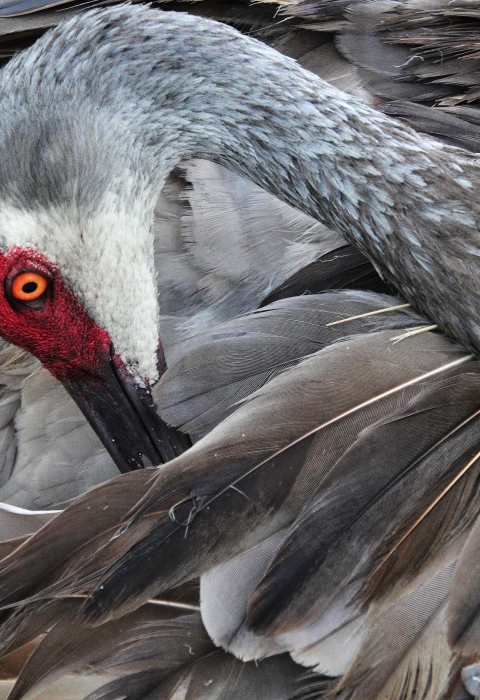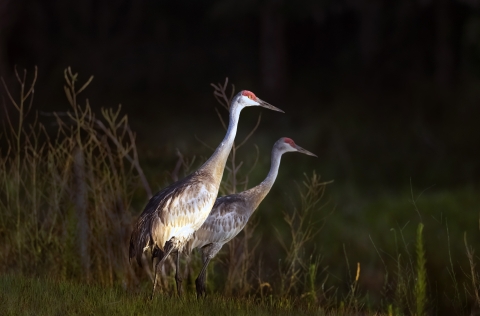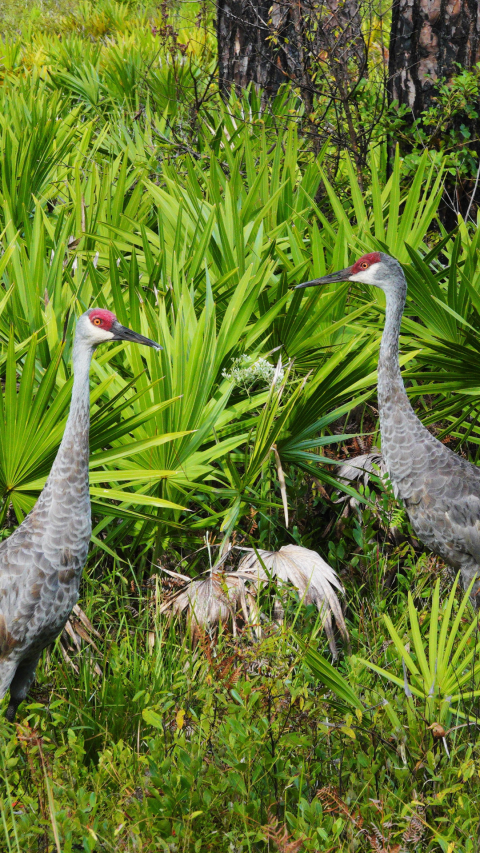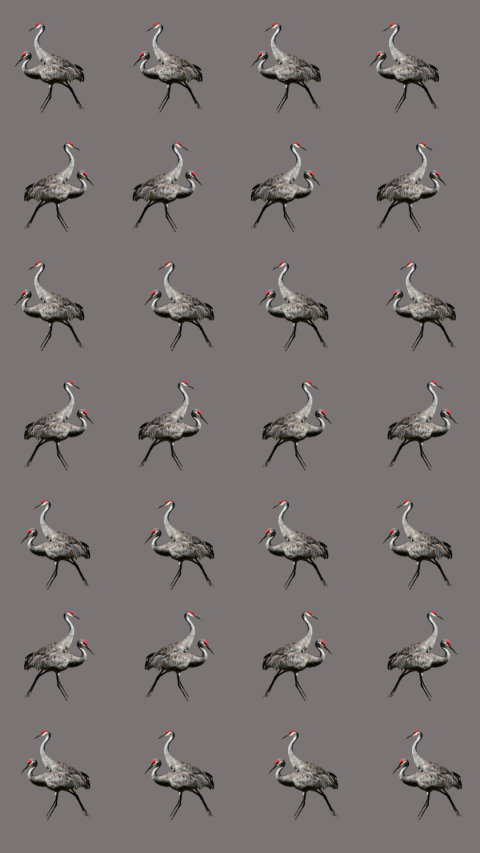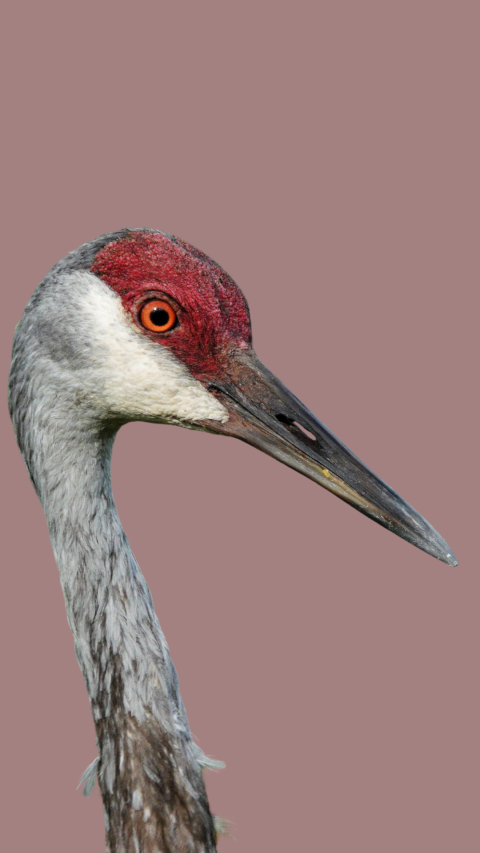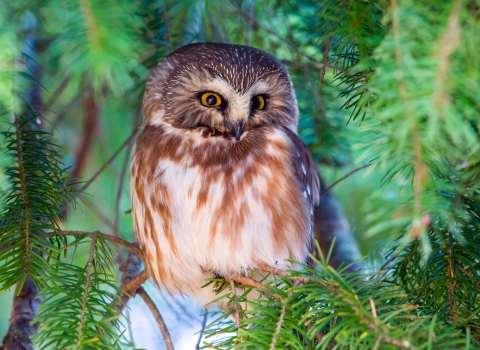Easy, breezy, beautiful, cover-bird.
Welcome to our new Bird of the Month series! As 2024 progresses, so will your bird knowledge. Each month, we're featuring a new bird, valuable avian information, a photo contest, and phone wallpapers that you can download.
What better way to kick off January 2024 than with the sandhill crane?! Their legs were MADE for kicking!
Sandhill cranes are large birds with long legs, a striking red crown, and an impressive call. Even if you've never seen one of these birds in person, chances are that you've heard them vocalize.
As one of only two species of cranes native to North America (the other being the endangered whooping crane), sandhill cranes are most often seen in grasslands, wetlands, or in flight. If you're keen on adding sandhill cranes to your lifelong bird list, we suggest a visit to a National Wildlife Refuge. Here are some of our top recommendations:
Wheeler National Wildlife Refuge, Alabama: Hosts the Annual Festival of the Cranes from January 12 to 14, 2024. You can also view large flocks of sandhill cranes (and sometimes whooping cranes!) at Wheeler National Wildlife Refuge from mid-November, when they migrate to the refuge, until mid-February.
Mississippi Sandhill Crane National Wildlife Refuge, Mississippi: This refuge was established in 1975 under authority of the Endangered Species Act to protect the critically endangered Mississippi sandhill cranes and their unique, and itself endangered, wet pine savanna habitat.
Eufaula National Wildlife Refuge, Alabama: This refuge was established to provide habitat for wintering waterfowl and other migratory and resident wildlife.
If none of the above are located near you, you can find a different National Wildlife Refuge using our sandhill crane species map!
Sandhill Crane Photo Contest
3, 2, 1... strike a pose! With long legs ready to strut their stuff, sandhill cranes make the perfect model for photographers. As part of our Bird of the Month series, we invite you to submit your photos of sandhill cranes in a photo contest.
In the file name of your photo, please include your first and last name, contact email address, and the location where the photo was taken. Submissions will be judged by a panel of U.S. Fish and Wildlife Service employees. Once a winner is selected, they will be contacted via email and asked to sign a photo release form. This form protects the photographer's rights, ensures proper credits are given, and grants the U.S. Fish and Wildlife Service permission to share the photo on our social media channels.
The winner will be announced publicly near the end of each month on our Southeast Regional Facebook and X (formerly known as Twitter) platforms.
A photo contest will occur each month for each featured bird species. At the end of 2024, all twelve winning photographs will be shared on our regional social media accounts.
Submit your original photos of sandhill cranes here!
Sandhill Crane Phone Wallpapers
Need more sandhill cranes in your life? Never fear, phone wallpapers are here! Download your favorite, set your screen, and admire away!
Five Sandhill Crane Fast Facts:
1. Male sandhill cranes court females with an elaborate "dance”. The male birds will spread their wings and leap in the air while vocalizing.
2. Sandhill cranes mate for life. Male and female birds work together to build their mound-shaped nest out of emergent vegetation in wetland habitats.
3. Some sandhill cranes migrate long distances across the Bering Strait every spring and fall as they travel to and from their nesting grounds in Siberia.
4. Sandhill cranes stay warm while standing for hours in near-freezing water because they can reduce the amount of blood that has to be warmed by constricting the blood vessels in their feet. In addition, the arteries and vessels in their legs are right next to each other, which warms the colder blood from their feet before it reaches the center of their body.
5. They are known for their noisy calls and have at least 18 vocalizations used to communicate with their flocks and mates. Listen to their call here
Want to learn more about the sandhill crane's biology? Check out their U.S. Fish and Wildlife Service species profile to learn about their habitat, diet, range, and more!
